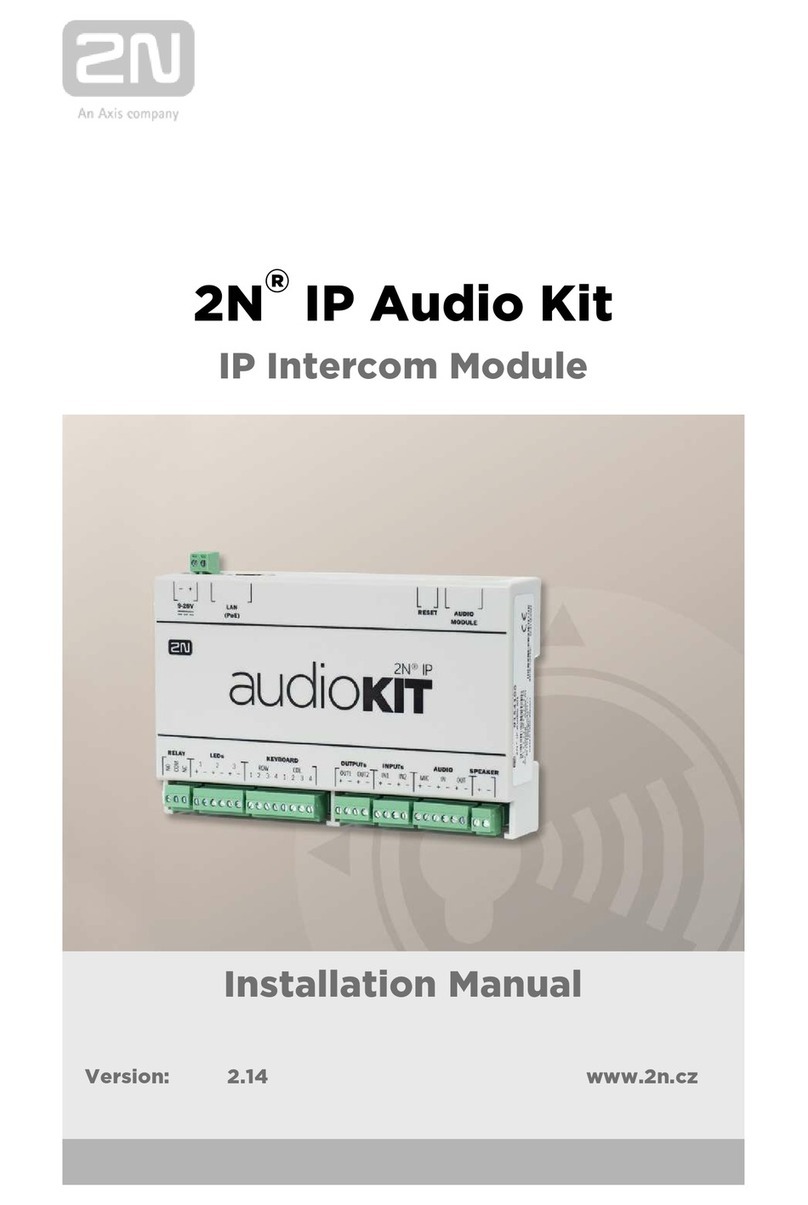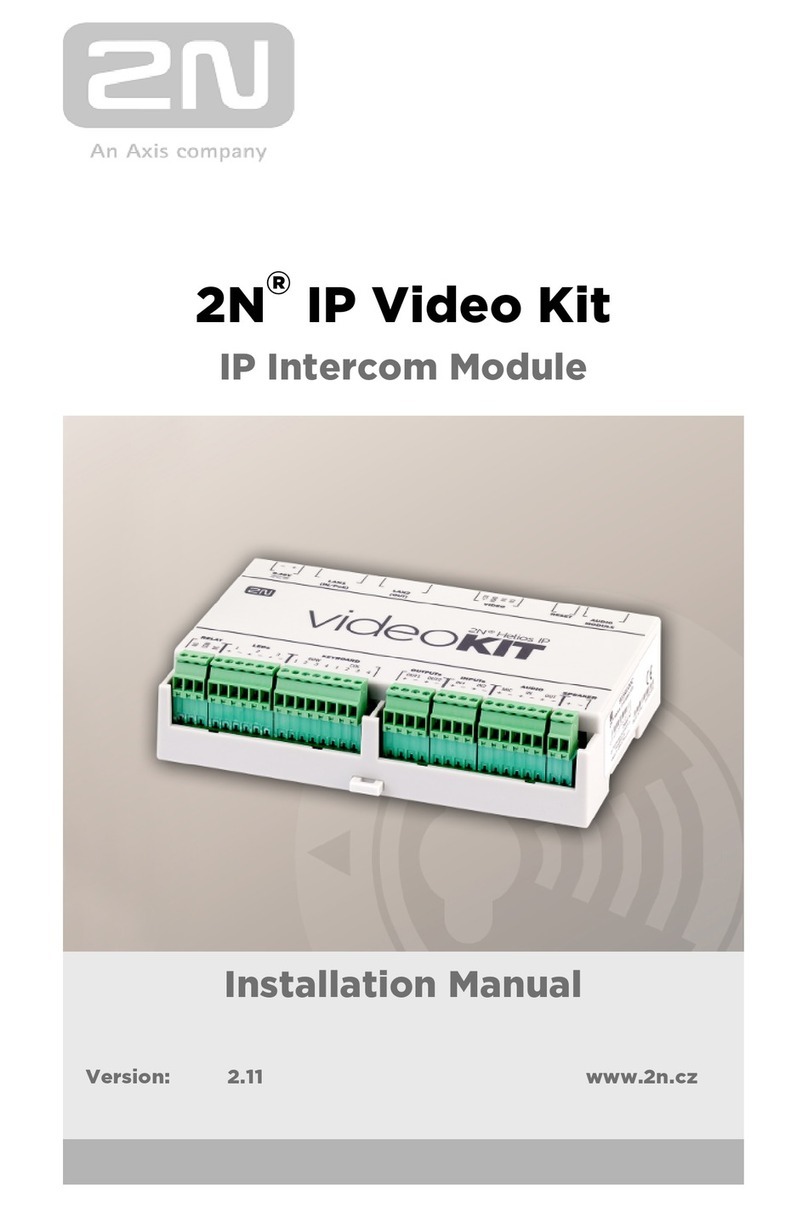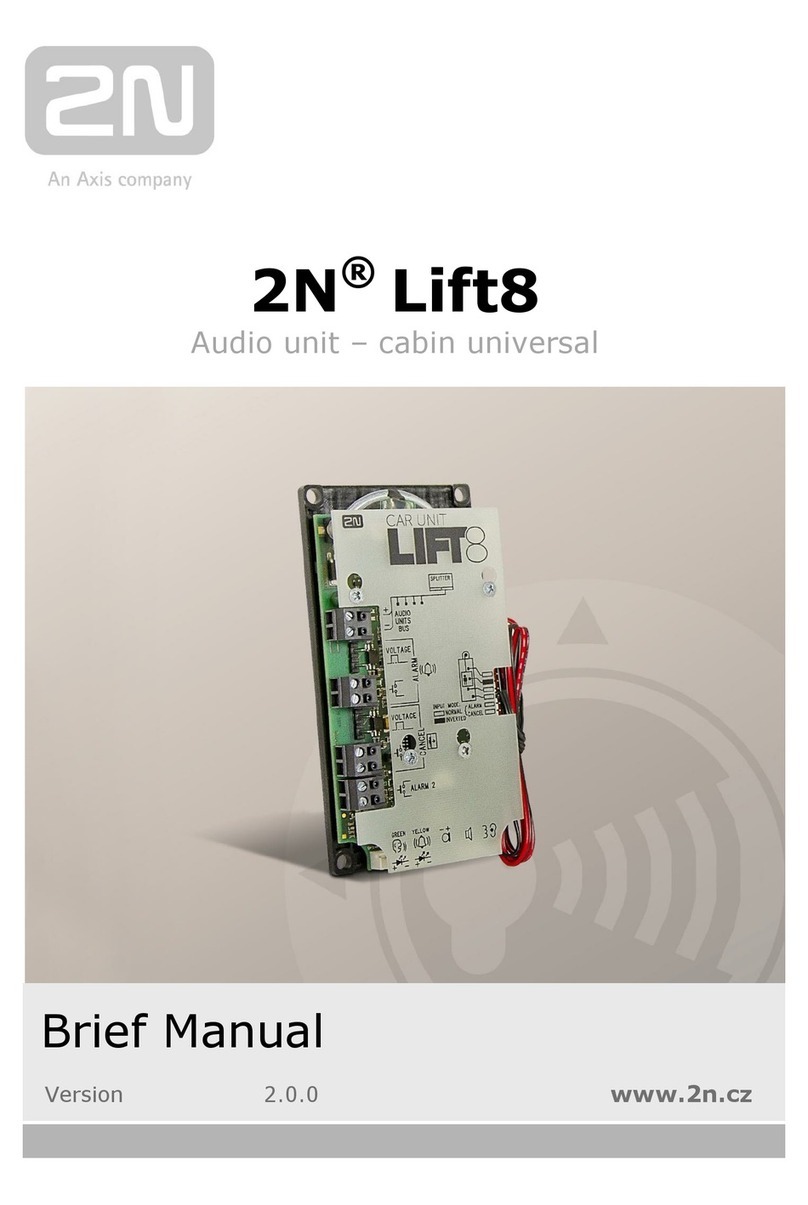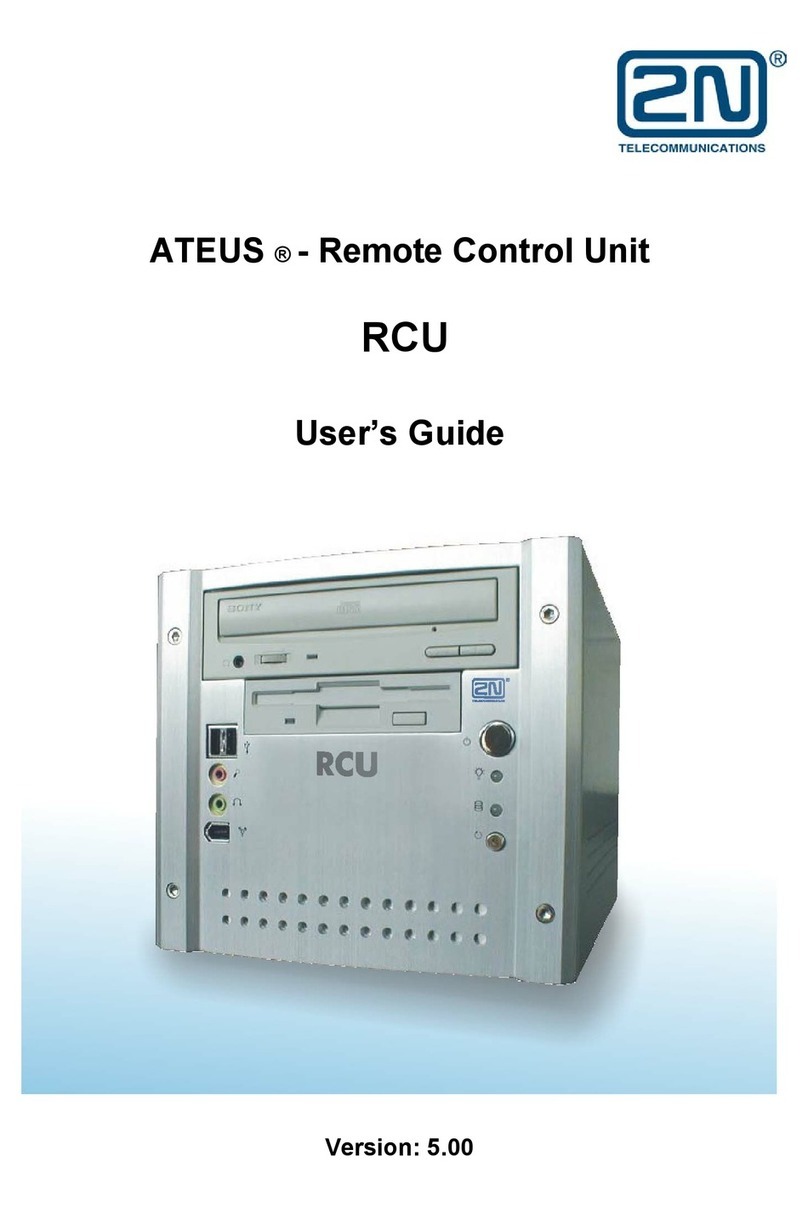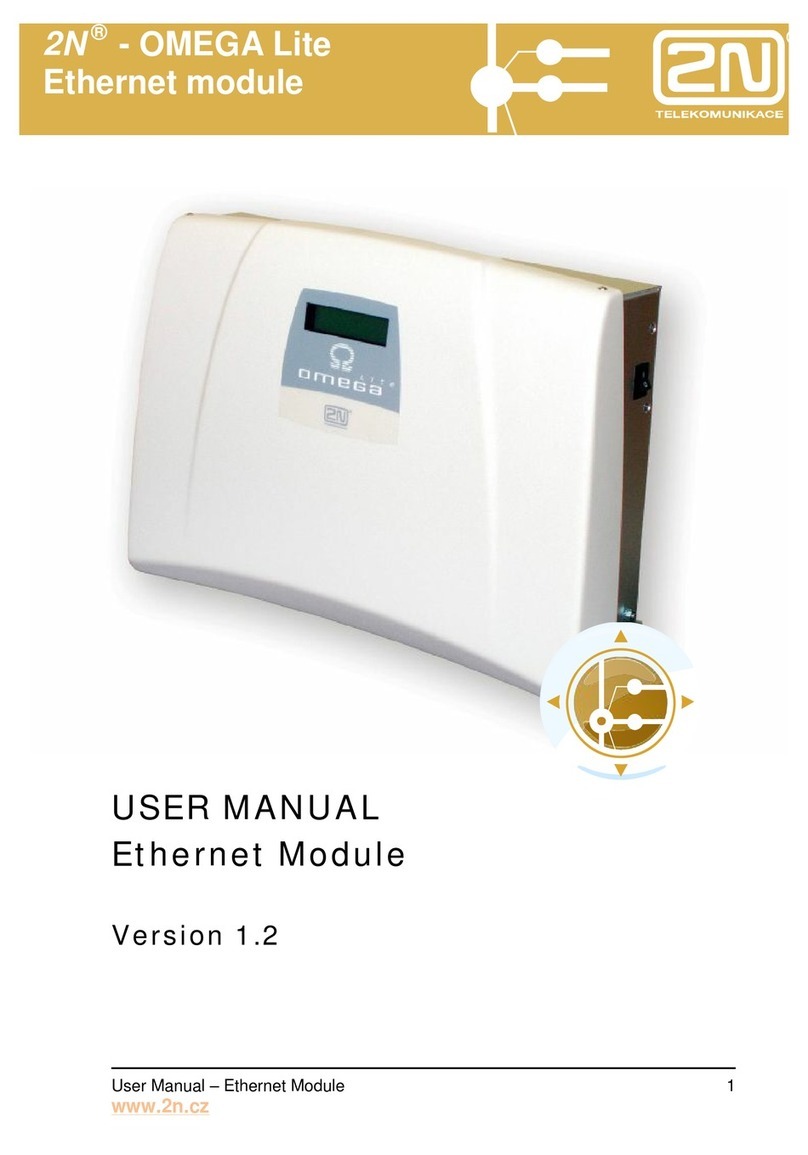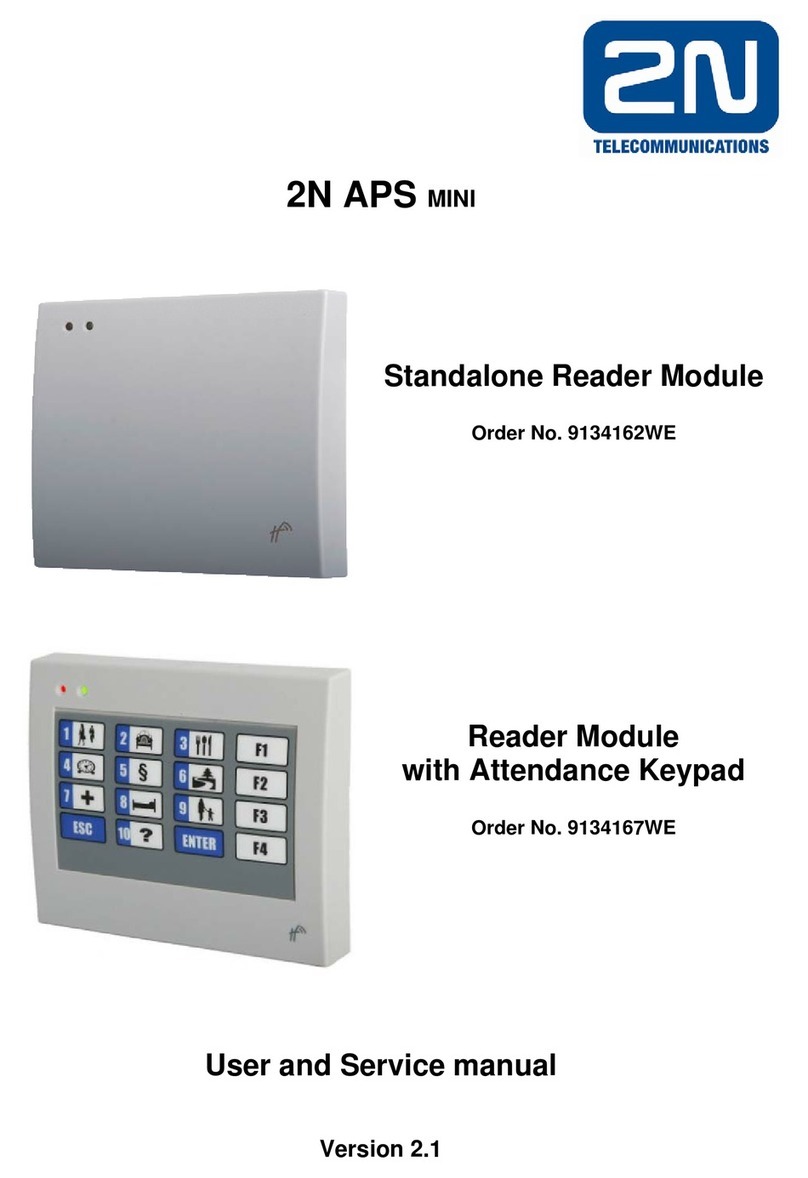
8
Setting parameters and access rights using the PC
Setup program APS mini Reader is
designed for operating system Windows
95, Windows NT 4.0 and higher, it does
not require installation. It is designed for
offline regime of readers and it allows
programming operational parameters on
the individual 2N APS mini modules
connected via data bus RS485. It does
not allow programming access rights.
Connection of modules to the PC
requires either communication converter
RS485/RS232 (or RS485/USB) with
automatic switching of the direction of
communication or converter
RS485/Ethernet, with settings: 8 data
bits, even parity, 19 200 bits per second,
1 stop bit.
Main menu of the program contains the following commands:
•Program Settings … displays settings dialogue for the communication port of the PC
and code of the service card,
•Start / Stop … controlling communication with the module,
•Write … saves the configuration of general properties of the reading module,
•Program End … ending the program.
Workspace of the program is divided into 3 parts:
•Area for visualization of the status of the reading module (to be used for verification of
proper connection of the module),
•Area for setting the HW address,
•Area with control elements for setting the general properties of the module.
Indicators are located in the individual parts of the status bar (from the left):
•Indicator of the state of communication with the module (red color indicates error in
communication, flawless communication is indicated by green color),
•Indicator of the process of saving operational parameters,
•Verbal description of the state of communication.
Setting the operational parameters defined in the corresponding input fields is carried out
after communication was established and after the button “Write” was pressed. The setup
program communicates always with one module (module with address specified in the
field “HW Address”). Result of the action is shown by the progress indicator in the second
part of the status bar.
Modules 2N APS mini in the online regime can be controlled via programs APS mini
Administrator, APS mini Events and APS mini ED. These allow, besides programming the
parameters of the modules, also setting access rights and monitoring various events (for
example arriving and leaving persons) and analyze them. The programs can be
downloaded free of charge from the manufacturer’s website www.2n.cz.
Setting
general
HW address












